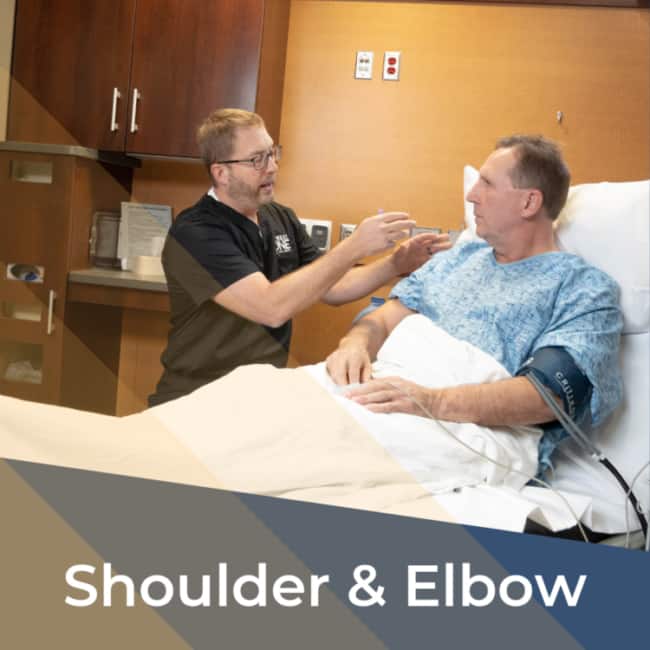Are you suffering from symptoms of Shoulder Blade (Scapula) Fracture?
The Orthopedic Specialists at MD West ONE are able to properly diagnose and treat shoulder blade fractures through both surgical and non-surgical treatments. If you have the following symptoms, you may want to make an appointment with one of our Board Certified Specialists.
- Extreme pain when you move the arm
- Swelling around the back of the shoulder
- Scrapes around the affected area.
Shoulder Blade Fractures
The shoulder blade is a triangular-shaped bone that is protected by a complex system of surrounding muscles. Shoulder blade fractures represent less than 1% of all broken bones and many of them can be treated without surgery.
Warning signs of a shoulder blade fracture present as extreme pain when you move your arm or swelling around the back of the shoulder.
One or more parts of the shoulder blade can be fractured:
- Scapular body (50% to 60% of patients)
- Scapular neck (25% of patients)
- Glenoid
- Acromion
- Coracoid
What is the cause of a Shoulder Blade Fracture?
Your shoulder blade can be fractured by high-energy, blunt trauma injuries, such as those experienced in a motorcycle or motor vehicle collision or falling from a significant height. Other major injuries often accompany scapular fractures, such as fractures in the shoulder, collarbone and ribs, or damage to the head, lungs, or spinal cord.
How is a Shoulder Blade Fracture diagnosed?
Doctors diagnose a shoulder blade fracture with a medical history, physical exam, X-rays of the affected side, and a computed tomography (CT) scan.
How is a Shoulder Blade Fracture?
There are both surgical and nonsurgical options for a shoulder blade fracture, and the best option is different for every person. In planning your treatment, your doctor will consider your age, activity level, general health, and the type fracture you have.
There is no evidence of better results from surgery performed near the time of injury versus later on. For this reason, many doctors first recommend management of a shoulder blade fracture with a simple sling and other nonsurgical treatments.
Your doctor may recommend surgery with the following fractures:
- Fractures of the glenoid articular surface in which bone has moved out of place (displaced)
- Fractures of the neck of the scapula with a lot of angulation
- Fractures of the acromion process that cause the arm bone to hit against it (impingement syndrome)
During this operation, the bone fragments are first repositioned (reduced) in their normal alignment, and then held together by attaching metal plates with special screws to the outer surface of the bone.
Your specialist will discuss the options and help you decide which type of surgery is the most appropriate for you if surgery is recommended.
Book an Exam with an Orthopedic Specialist
Are you suffering from arthritis symptoms? Don't wait any longer to get relief. Make an appointment to see one of our orthopedic specialists.
American Academy of Orthopaedic Surgeons
This article has been written and peer-reviewed by the AAOS Patient and Public Relations Committee and the AAOS Evidence-Based Medicine Committee.


